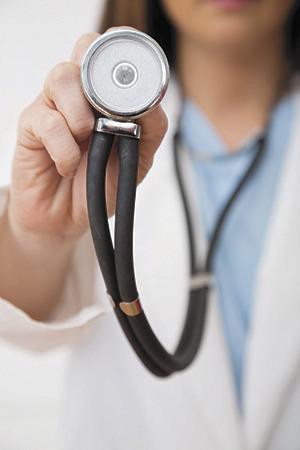From the second a stroke occurs, the clock is ticking to reduce the damage that can occur when too much time passes before treatment is started. The department recently received a $3.75 million grant from the Centers for Disease Control and Prevention (CDC) to educate people on how to reduce their stroke risk, and encourage people to call 9-1-1 if they or someone they know is experiencing signs or symptoms of a stroke. The other piece of the work is improving the quality of health care provided to stroke patients.
The award will give the agency $750,000 a year to support this work through June 2020. It also requires our agency to develop a plan for long-term, sustainable funding to continue stroke prevention work, reduce major disabilities after stroke and promote effective treatment efforts statewide.
The department will focus its work in Pierce and Pacific counties during the first year of the five-year grant. The grant will fund public awareness efforts, along with creating a tracking system to follow stroke patients from the initial event until 30 days after they’re discharged from a health care facility. The work will link emergency medical services, emergency departments and hospital care, rehabilitation in multiple settings and primary care providers.
“Reacting quickly is critical when people have stroke symptoms,” said state Health Officer Dr. Kathy Lofy. “The faster patients get treatment, the better the outcome tends to be. This grant will help increase awareness and improve the recovery of stroke patients.”
The agency will use the stroke patient tracking system to improve each step a stroke patient experiences during treatment and recovery. Over these five years, the work will expand to include additional health care facilities, emergency medical service agencies and counties. The ultimate goal is to improve how well people recover after having a stroke.
If health care providers can diagnose and start treatment for a stroke within three hours of the symptoms, the person has a much greater chance of reducing its lasting effects. However, most strokes in Washington aren’t recognized fast enough.
“Reducing delays and improving quality in the health care system are important, but they aren’t enough,” Dr. Lofy said. “It’s essential for people to call 9-1-1. If you notice someone having signs of stroke, act fast.”
The signs of stroke can appear as face drooping, arm weakness, or difficulty speaking. Call 9-1-1 immediately, even if the symptoms go away. Minutes can make a difference when dealing with a stroke. Don’t drive someone who has signs of a stroke to the hospital; emergency responders can start treatment while transporting them to the hospital. Stroke is a leading cause of death and serious long-term disability in Washington.
The good news is that a stroke is largely preventable. Those at highest risk of stroke are people with high blood pressure, diabetes, heart disease, high blood cholesterol, tobacco use or obesity. Other risk factors are physical inactivity, excessive alcohol use and drug use. Although most people who experience stroke are in their 60s, 70s, 80s or older, stroke can occur at any age.


